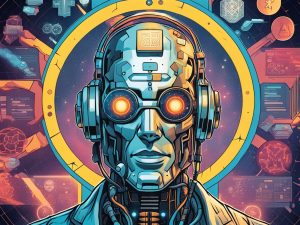Scientists Use AI to Turn Thoughts into Music
Technology has advanced to the point where scientists can now recreate music simply by scanning brain activity. In a groundbreaking study led by the University of California at Berkeley, researchers used artificial intelligence (AI) to generate recognizable audio of Pink Floyd’s “Another Brick in the Wall, Part 1” by analyzing the electrical signals directly from the brains of epilepsy patients. Here are the key points:
1. Brain Data Collection: Electrical signals were recorded from the brains of epilepsy patients as they passively listened to the song. The activity of auditory processing regions was captured.
2. Machine Learning Analysis: The brain data set was fed into machine learning algorithms, allowing the AI models to associate specific neural activity with acoustic features like pitch, tempo, vocals, and instruments.
3. Generation of Audio: The models were able to generate new spectrographic representations from the brain data alone. These visualizations were then converted into waveforms, producing audio that resembled “Another Brick in the Wall, Part 1.”
4. Neural Decoding: The neural decoding not only identified the melody and lyrics but also reflected which instruments elicited specific responses in different brain regions. This breakthrough represents a significant advancement in decoding thoughts.
5. Potential Applications: This technology could be used to help paralyzed patients or stroke victims regain the ability to speak simply by thinking. It could also allow for the reconstruction of fuller thoughts and intended speech by adding the dimension of melody and prosody.
Hot Take
The ability to turn thoughts into music using AI represents a major leap forward in decoding the human mind. While challenges remain, the rapid advances in recording devices and AI capabilities suggest that thought-to-speech interfaces could become a reality in the near future. Beyond clinical applications, this research opens up exciting possibilities for studying memory, learning, and creativity by directly accessing the mind’s inner experience.





 By
By
 By
By
 By
By

 By
By